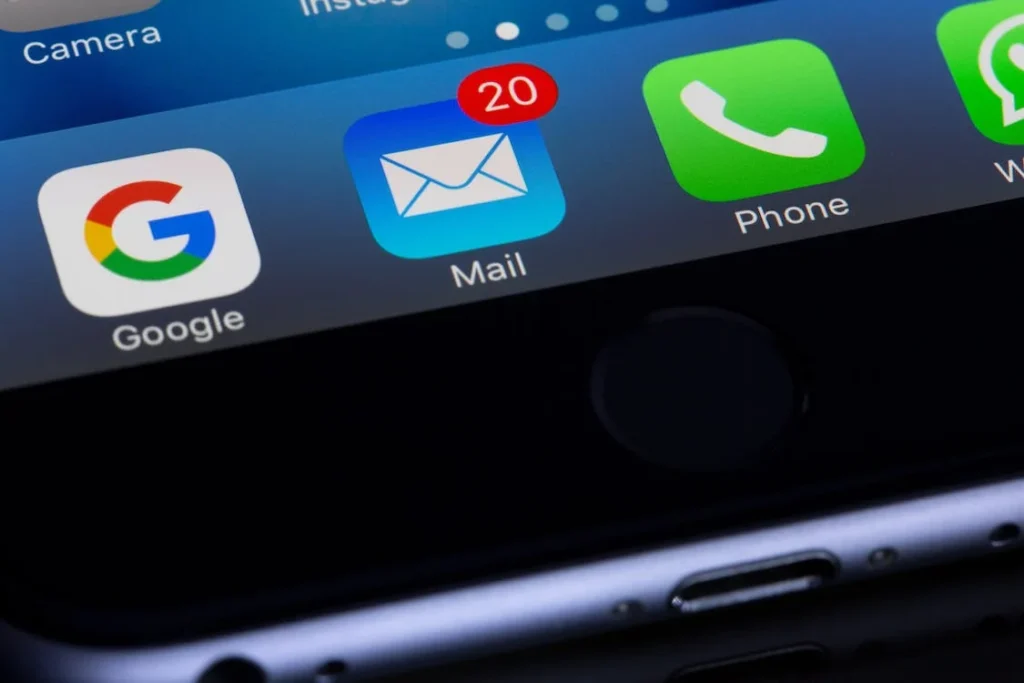Choosing the right email marketing tool is like picking the perfect outfit for an interview. It needs to be just right; not too flashy to distract, but impressive enough to remember. In the vast wardrobe of digital marketing tools, Mailify and Mailshake hang prominently, each offering its own style and flair to help you nail that first impression with your email campaigns. But which one should you choose? Let’s dive deep into the world of email marketing and find out.
| Mailify | Mailshake |
|---|---|
 |  |
| G2 Score – 4.3 out of 5 stars | G2 Score – 4.7 out of 5 stars |
| TrustRadius Score – Nil | TrustRadius Score – 8.6 out of 10 |
The Battle of Deliverability: Ensuring Your Message Lands in the Inbox
When it comes to email marketing, getting your emails delivered to the inbox is the first critical step. After all, what good is a beautifully crafted message if it ends up in the spam folder, never to be seen? This is where the deliverability rates of Mailify and Mailshake come into play, acting as the gatekeepers to your email success.
Understanding Deliverability
Email deliverability is influenced by several factors, including the sender’s reputation, email content, and engagement rates. Both Mailify and Mailshake have developed their platforms with these factors in mind, but they approach the challenge of deliverability in slightly different ways.
Mailify’s Approach
Mailify emphasizes its sophisticated email infrastructure and partnerships with major internet service providers (ISPs). This relationship helps ensure that emails sent through Mailify are recognized as legitimate and thus have a higher chance of landing in the inbox. Additionally, Mailify offers a suite of tools designed to optimize email deliverability. These include customizable sign-up forms, segmenting options to target your emails more precisely, and detailed reporting to monitor your campaigns’ performance.
One of Mailify’s standout features is its automatic email cleaning service. Before you even hit send, Mailify scans your email list, removing invalid or inactive email addresses. This preemptive cleaning not only boosts your deliverability rates but also protects your sender’s reputation by reducing bounce rates.
Mailshake’s Strategy
Mailshake, on the other hand, takes a slightly different tack. Its platform is built around the concept of personalization and engagement. The idea is simple yet powerful: emails that are personalized and engaging are less likely to be marked as spam and more likely to be opened and interacted with. Mailshake provides an array of templates that can be customized to fit your message and audience. Moreover, its powerful automation tools allow for follow-ups based on recipient actions, such as opening an email or clicking a link, further increasing engagement rates.
Mailshake also places a strong emphasis on sender reputation. The platform offers detailed guides and support to help users warm up their email accounts, a process designed to gradually build a sender’s reputation with ISPs. This warming process is crucial for new domains or email marketers who are just getting started, as it helps establish credibility and improves overall deliverability.
So, Who Wins the Deliverability Battle?
Choosing between Mailify and Mailshake based on deliverability boils down to your specific needs and strategy. If your focus is on ensuring your emails reach the inbox through a robust infrastructure and list management, Mailify might be the tool for you. Its automatic list cleaning and strong ISP relationships offer a solid foundation for high deliverability rates.
Conversely, if you believe in the power of personalization and engagement to boost your emails’ performance, Mailshake’s approach aligns with your strategy. Its emphasis on personalization, automation, and sender reputation can significantly impact your campaign’s success.
Navigating the User Experience: Mailify vs. Mailshake
The user experience (UX) of an email marketing tool can significantly influence your productivity and the effectiveness of your campaigns. A platform that’s intuitive and easy to navigate can save you time and frustration, allowing you to focus on crafting compelling messages rather than figuring out how to use the software. Let’s compare the UX of Mailify and Mailshake to see how they stack up.
Mailify’s User Interface: A Closer Look
Mailify prides itself on a user-friendly interface designed to accommodate both beginners and experienced marketers. The dashboard is clean and straightforward, with a logical layout that makes it easy to find what you need. Creating a campaign in Mailify is a step-by-step process, guided by helpful tips and tutorials along the way. This structured approach is especially beneficial for those who are new to email marketing or prefer a guided experience.
One of the standout features of Mailify’s UX is its drag-and-drop email builder. It allows for the easy creation of visually appealing emails without the need for coding knowledge. The builder offers a wide range of templates and customization options, enabling you to design emails that align with your brand’s aesthetic. Furthermore, Mailify’s segmentation and automation features are integrated seamlessly into the platform, making it straightforward to target your emails and set up complex campaign sequences.
Mailshake’s User Experience: Breaking It Down
Mailshake takes a slightly different approach to its UX, with a focus on simplicity and efficiency. The platform is designed around the core functions of email outreach and follow-up, with a clean interface that eliminates unnecessary complexity. For users focused on sales, PR, or link-building campaigns, this streamlined approach can be a significant advantage, allowing for quick setup and execution of campaigns without a steep learning curve.
Mailshake’s email builder is more text-focused, reflecting its emphasis on personalized, one-to-one communication rather than elaborate design. This focus is consistent with Mailshake’s overall strategy of creating engaging, personalized email sequences. However, users looking to create more graphically rich emails might find the options somewhat limited compared to Mailify.
Where Mailshake shines is in its automation and tracking capabilities. Setting up automated follow-ups based on recipient actions is straightforward, and the platform provides detailed analytics to track the performance of each email and sequence. This data-driven approach supports continuous improvement of your campaigns based on what’s working best.
UX Comparison: Which is Better?
The choice between Mailify and Mailshake from a UX perspective largely depends on your priorities and the nature of your email campaigns. If you value a guided experience with a strong emphasis on design and visual impact, Mailify’s comprehensive and intuitive platform may be more appealing. Its drag-and-drop email builder and extensive template library offer great support for creating visually stunning emails with ease.
On the other hand, if your focus is on efficiency, personalization, and data-driven decisions, Mailshake’s streamlined interface and powerful automation features might be more to your liking. Its approach is particularly well-suited to users who prioritize straightforward text-based communication and want to spend less time on campaign setup and more on refining their outreach strategies.
Pricing Models: Mailify vs. Mailshake
When it comes to choosing the right email marketing tool, pricing is often a decisive factor. Businesses, especially small and medium-sized enterprises (SMEs), need to balance functionality with affordability. Let’s break down the pricing models of Mailify and Mailshake to see which platform offers the best value for your money.
| Mailify | Mailify offers a unique credit-based system, where users buy email credits that can be used to send emails. Essential Plan: Includes basic features like email campaigns and forms. Pricing starts at around $69 for 5,000 credits. Premium Plan: Adds advanced features such as SMS marketing, automation, and landing pages. Pricing starts at around $129 for 5,000 credits. Exclusive Plan: Offers bespoke services and support, with pricing available upon request. Note: The number of emails you can send per credit varies based on the plan and additional features. |
| Mailshake | Email Outreach Plan: Priced at $59/user/month when billed annually. Includes features like email personalization, lead catchers, and analytics. Sales Engagement Plan: Priced at $99/user/month when billed annually. Includes additional features like phone dialer, social selling, and Salesforce integration. Both plans offer features tailored for sales teams and agencies focusing on cold email outreach and sales engagement. |
Mailify’s Pricing Structure
Mailify offers a flexible pricing model designed to accommodate a wide range of needs and budgets. The platform uses a subscription-based model with several tiers, each offering a different set of features and capabilities. This tiered approach allows you to choose a plan that fits your current needs while giving you the option to scale as your business grows.
One of the unique aspects of Mailify’s pricing is the inclusion of credits, which are used each time you send an email. This system can be advantageous for businesses with fluctuating email volumes, as you only pay for what you use. Additionally, Mailify provides unlimited contact storage across all its plans, which is a significant plus for businesses with large contact lists.
Mailify also offers a free trial, allowing users to test the platform before committing to a subscription. This trial period is a great opportunity to explore Mailify’s features and determine if it aligns with your email marketing goals.
Mailshake’s Pricing Options
Mailshake, similar to Mailify, employs a subscription-based pricing model, but with a focus on simplicity and predictability. Instead of credits, Mailshake offers unlimited emails across all its plans, making it easier for businesses to manage their budgets without worrying about exceeding email limits. This approach is particularly beneficial for high-volume senders who prioritize outreach and engagement over the design aspects of their emails.
Mailshake’s plans are differentiated by the features and level of access to support services. Higher-tier plans include advanced automation features, A/B testing capabilities, and priority support, among other benefits. This structure ensures that businesses of all sizes can find a plan that meets their needs without paying for unnecessary extras.
Like Mailify, Mailshake offers a free trial to new users. This trial provides full access to the platform’s features, giving you a comprehensive understanding of its capabilities and how it can support your email marketing strategy.
Comparing Value for Money
Both Mailify and Mailshake offer competitive pricing, but their value proposition differs based on your specific requirements. Mailify’s credit-based system and tiered plans can offer more flexibility for businesses with varying email volumes or those that prioritize design and segmentation features. The platform’s strong emphasis on deliverability and design might justify the cost for users who need these capabilities.
On the other hand, Mailshake’s straightforward, unlimited email model can be more cost-effective for users focused on outreach, sales, or link-building campaigns. Its simplicity and focus on personalization and automation make it a strong contender for businesses that want to maximize engagement without worrying about email limits.
In summary, choosing between Mailify and Mailshake based on pricing involves considering your email marketing priorities, the volume of emails you plan to send, and the specific features that are most important to your campaigns. Both platforms offer solid options, but the best choice for you will depend on your unique needs and budget considerations.

Related: Check out our free SEO suite

Integration Capabilities: Mailify vs. Mailshake
The ability to integrate with other tools and platforms is a crucial aspect of selecting an email marketing tool. These integrations can streamline workflows, enhance data management, and ultimately, contribute to more effective and efficient marketing campaigns. Let’s dive into the integration capabilities of Mailify and Mailshake to determine which platform offers the connectivity you need.
Mailify’s Integration Ecosystem
Mailify boasts a comprehensive integration ecosystem designed to connect with a wide variety of third-party applications and services. This ecosystem encompasses CRM systems, e-commerce platforms, social media networks, and productivity tools, among others. Such a broad range of integrations is beneficial for businesses looking to automate and synchronize their marketing efforts across different channels and platforms.
Key integrations include popular CRM software like Salesforce, enabling users to seamlessly sync contact data and campaign activities. E-commerce integrations with platforms like Magento and Shopify allow for the automation of targeted and transactional emails based on customer behavior and purchase history. Additionally, Mailify offers connectivity with social media platforms, facilitating the sharing of email content on social networks and the ability to track engagement metrics from these channels.
Mailify also supports integration with Zapier, a web-based service that connects many web applications without requiring coding knowledge. Through Zapier, Mailify can be linked to hundreds of additional services, significantly expanding its integration capabilities and allowing for a high degree of customization in automating workflows.
Mailshake’s Integration Offerings
Mailshake also recognizes the importance of integrations, focusing on providing users with the ability to connect to essential services and tools that complement its core functionalities. Similar to Mailify, Mailshake offers direct integrations with key CRM systems, including Salesforce and Pipedrive, ensuring that sales teams can maintain up-to-date contact records and campaign interactions.
Mailshake’s strength in integrations lies in its emphasis on sales and outreach activities. It integrates with LinkedIn via a Chrome extension, enabling users to automate and track outreach efforts on the professional networking platform. This feature is particularly valuable for users leveraging LinkedIn for lead generation and networking.
Moreover, Mailshake’s integration with Zapier opens up a wide array of possibilities for connecting with other apps and services. This includes project management tools, customer support platforms, and more, allowing for a highly customizable setup that can automate various aspects of your marketing and sales processes.
Integration Capabilities: Which Platform Has the Edge?
The choice between Mailify and Mailshake, in terms of integration capabilities, depends largely on your specific needs and the tools you already use or plan to use in conjunction with your email marketing efforts.
Mailify offers a broader range of direct integrations, making it a strong option for businesses that rely on a diverse set of tools across different functions, such as e-commerce, CRM, and social media marketing. Its extensive ecosystem can help streamline marketing operations, making Mailify a compelling choice for those seeking comprehensive connectivity.
Mailshake, while offering fewer direct integrations, focuses on the quality and relevance of its connections, particularly for sales and outreach. Its integrations are carefully selected to support the platform’s strengths in sales automation, LinkedIn outreach, and CRM synchronization. For businesses focused on sales enablement and looking for a tool that integrates well with sales-specific applications, Mailshake might be the better fit.
Ultimately, the decision between Mailify and Mailshake’s integration capabilities should be based on the specific tools you use in your marketing and sales stack, as well as the workflows you wish to automate. Both platforms offer valuable integrations, but your choice should align with your operational needs and objectives.
Customer Support and Training Resources: Mailify vs. Mailshake
When it comes to email marketing tools, having access to reliable customer support and comprehensive training resources can make a significant difference, especially when you’re trying to navigate through complex features or troubleshoot issues. Let’s explore how Mailify and Mailshake stack up in terms of customer support and the availability of learning materials.
The Support System of Mailify
Mailify understands the importance of support and training, offering various channels and resources to help users maximize their platform’s potential. Users can access a dedicated support team through email, phone, and live chat, ensuring that help is readily available regardless of the issue’s complexity. The responsiveness and expertise of Mailify’s support team are frequently highlighted by users, pointing to a commitment to customer satisfaction and problem resolution.
Beyond direct support, Mailify places a strong emphasis on education and training. The platform offers an extensive library of tutorials, guides, and video content designed to help users understand its features and capabilities fully. Whether you’re a beginner looking to grasp the basics of email marketing or an experienced marketer seeking to optimize your campaigns, Mailify’s knowledge base serves as a valuable resource. Additionally, Mailify conducts webinars and training sessions, offering interactive opportunities to learn best practices and new strategies.
Mailshake’s Approach to Support
Mailshake, while also committed to providing solid customer support, takes a slightly different approach. The platform offers email and live chat support, focusing on quick and efficient problem-solving. The quality of Mailshake’s customer service is well-regarded, with a particular emphasis on the timeliness of responses. This approach aligns with Mailshake’s overall emphasis on efficiency and productivity, ensuring that users can maintain momentum in their outreach campaigns without prolonged downtimes due to unresolved issues.
Training and educational resources are another area where Mailshake shines. The platform provides users with a comprehensive collection of articles, tutorials, and case studies, all aimed at enhancing their outreach efforts. Mailshake’s blog is regularly updated with insightful content on sales, marketing, and email outreach strategies, reflecting the platform’s strong focus on sales enablement and personalization. Additionally, Mailshake offers resources specifically designed to improve sales skills and email writing, directly contributing to the effectiveness of users’ campaigns.
Comparing Customer Support and Training Resources
Both Mailify and Mailshake demonstrate a strong commitment to customer support and education, but their approaches cater to slightly different user needs. Mailify’s multi-channel support system and extensive educational content make it an excellent choice for users who value comprehensive support and the opportunity to deepen their knowledge of email marketing. The platform’s focus on education through various formats is ideal for those who prefer to learn at their own pace and in different ways.
On the other hand, Mailshake’s streamlined support approach and sales-focused educational resources are particularly suited for users who prioritize efficiency and are mainly focused on sales and outreach. The platform’s resources are crafted to provide actionable insights and strategies, directly impacting the success of sales-driven email campaigns.
In conclusion, the choice between Mailify and Mailshake in terms of customer support and training resources should align with your specific needs. If you’re looking for a broad range of support options and comprehensive educational content on email marketing, Mailify might be the better fit. However, if your focus is on sales and you value targeted, actionable advice, Mailshake’s approach could be more beneficial.
Analytics and Reporting: The Insightful World of Mailify and Mailshake
In the realm of email marketing, the ability to track, analyze, and interpret campaign performance is indispensable. Effective analytics and reporting tools not only help you understand how well your campaigns are performing but also provide insights into how you can optimize your strategies for better engagement and conversion rates. Let’s examine how Mailify and Mailshake equip you with the data you need to make informed decisions.
Diving into Mailify’s Analytical Offerings
Mailify offers a robust analytics suite designed to give users a comprehensive view of their campaign performance. The platform provides detailed reports on key metrics such as open rates, click-through rates, bounce rates, and unsubscribe rates. These metrics are crucial for evaluating the effectiveness of your emails and understanding your audience’s behavior.
Beyond the basics, Mailify goes a step further by offering geographic and device-based analytics. This means you can see where your recipients are opening your emails and on what devices, offering valuable insights into how to tailor your campaigns for better engagement. For example, if a significant portion of your audience opens emails on mobile devices, you might prioritize mobile optimization in your email design.
Mailify also includes advanced features like click mapping, which visually represents where recipients are clicking within your emails. This feature is incredibly useful for assessing the effectiveness of your email layout and content placement, enabling you to make data-driven adjustments to improve click-through rates.
Exploring Mailshake’s Reporting Capabilities
Mailshake, while maintaining a focus on simplicity and efficiency, also provides users with powerful reporting tools. The platform emphasizes metrics that are particularly relevant to sales and outreach campaigns, such as reply rates, lead generation rates, and conversion rates. These metrics are invaluable for sales teams and individuals focused on using email as a tool for direct sales and customer acquisition.
Mailshake’s reporting dashboard is designed for clarity and ease of use, allowing users to quickly assess the performance of their campaigns at a glance. Additionally, Mailshake offers the ability to track individual email sequences, giving users insights into which sequences are most effective at engaging recipients and driving conversions.
One of the standout features of Mailshake’s analytics is the integration with external sales and marketing tools. This integration capability means that you can funnel your email campaign data into your CRM or sales platform, providing a holistic view of your sales funnel and how your email campaigns contribute to your overall sales strategy.
Making the Decision: Analytics and Reporting in Mailify vs. Mailshake
The choice between Mailify and Mailshake from an analytics and reporting perspective hinges on what metrics are most important to you and how you intend to use those insights.
If you’re looking for a deep dive into your campaign performance with a focus on design optimization, geographic insights, and device usage, Mailify’s analytical tools are incredibly comprehensive. The platform’s advanced features like click mapping can significantly enhance your ability to fine-tune your email campaigns for maximum engagement.
Conversely, if your primary focus is on sales and outreach, Mailshake’s straightforward yet powerful reporting capabilities might be more aligned with your needs. The platform’s focus on sales-relevant metrics and the ability to easily integrate campaign data into your sales processes make it a strong contender for those whose email marketing strategy is tightly interwoven with sales activities.
Ultimately, both Mailify and Mailshake offer robust analytics and reporting features, but the best choice for you will depend on your specific campaign goals and how you plan to use the insights gained from your email marketing efforts.
Conclusion
In the dynamic world of email marketing, choosing between Mailify and Mailshake boils down to understanding your specific needs and preferences. Mailify shines with its comprehensive features, making it ideal for those who prioritize design, extensive integration capabilities, and robust analytics. Its user-friendly interface and extensive support resources cater to both novices and seasoned marketers looking for a deep dive into email campaign management.
On the flip side, Mailshake appeals to users with a keen focus on sales and outreach, offering streamlined processes, efficiency in campaign management, and analytics tailored for sales performance. Its simplicity and effectiveness in personalization and automation make it a go-to for sales teams and individuals aiming to maximize engagement and conversions through direct outreach. Ultimately, whether you lean towards the rich, detailed approach of Mailify or the focused, efficiency-driven strategy of Mailshake, both platforms stand out as top contenders in the realm of email marketing tools, capable of elevating your email campaigns to new heights.
Read next:
- 23+ Ultimate Customer Support Tools to Empower Your Business
- Data Processing Agreement: An International Perspective
- Best SEO Tools in 11 Categories to Elevate Your SEO
- 51+ Outstanding Email Marketing Tools to Skyrocket ROI
- 11 Best SMS Marketing Software: Our Picks!






















Comments are closed.